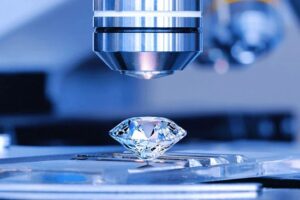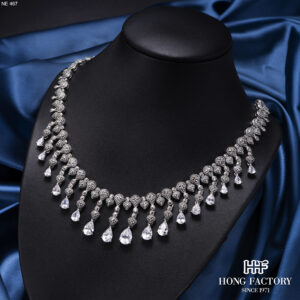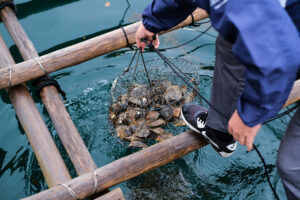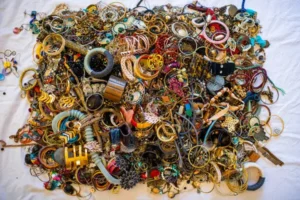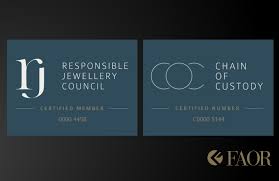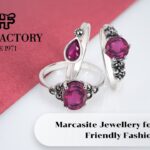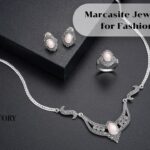Sustainability has become a major focus in the jewelry industry, with more consumers seeking ethically sourced and environmentally friendly options. Sustainable jewelry not only minimizes environmental impact but also supports fair labor practices and responsible mining. As eco-conscious shopping continues to gain momentum, jewelry brands are adapting by introducing innovative materials, ethical sourcing, and transparent manufacturing processes. This article explores the latest sustainable jewelry trends, helping eco-conscious shoppers make informed choices.
Mixed Metals: Combining Gold, Silver, and More
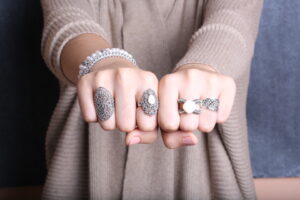
1. Why Sustainable Jewelry Matters
- Environmental Impact: Traditional mining processes contribute to habitat destruction, water pollution, and carbon emissions. Sustainable jewelry minimizes these effects by using ethical mining practices and recycled materials.
- Ethical Sourcing: Many jewelers are committing to fair-trade practices, ensuring workers are paid fair wages and work under safe conditions.
- Consumer Demand: More buyers are prioritizing sustainability, prompting brands to adopt eco-friendly business models.
- Longevity and Investment: High-quality sustainable jewelry is designed to last, reducing waste and promoting mindful consumption.
2. Key Sustainable Jewelry Trends
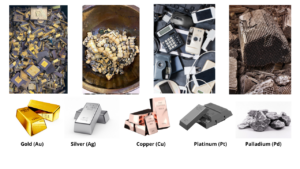
1. Recycled Precious Metals
- Brands are repurposing gold, silver, and platinum from old jewelry, electronics, and industrial waste.
- Recycled metals reduce the demand for newly mined materials, lowering environmental impact.
- Leading brands like Tiffany & Co. and Pandora have committed to using 100% recycled gold and silver.
2. Lab-Grown Diamonds and Gemstones
- Lab-grown diamonds offer an ethical and sustainable alternative to mined diamonds, with the same physical and chemical properties.
- Lab-created sapphires, emeralds, and rubies reduce the need for mining, making them a responsible choice.
- These gemstones are often more affordable and accessible while maintaining luxury appeal.
3. Fair-Trade and Ethical Gemstones
- Jewelers are sourcing conflict-free diamonds and fair-trade gemstones to ensure ethical labor practices.
- Certifications like the Kimberley Process help guarantee diamonds are ethically sourced.
- Small-scale mining cooperatives are being supported through fair wages and responsible extraction.
4. Sustainable Pearl Farming
- Eco-friendly pearl farms focus on maintaining water quality and marine biodiversity.
- Sustainable pearls, such as those from Fiji and Tahiti, are cultivated with minimal environmental disruption.
- Ethical pearl harvesting ensures that marine ecosystems are preserved while producing high-quality pearls.
5. Upcycled and Repurposed Jewelry
- Vintage and antique jewelry is being repurposed into new designs, reducing waste and promoting circular fashion.
- Upcycling heirloom jewelry into modern styles gives new life to old pieces while preserving sentimental value.
- Independent jewelers and artisans are using reclaimed materials to create unique, eco-friendly designs.
6. Biodegradable and Alternative Materials
- Innovative designers are incorporating wood, bamboo, plant-based resins, and vegan leather into jewelry.
- Sustainable materials help reduce reliance on traditional metals and synthetic gemstones.
- 3D printing technology allows for jewelry production with minimal waste and energy use.
3. How to Identify Sustainable Jewelry
- Look for Certifications: Trustworthy certifications include:
- Fairmined and Fairtrade Gold
- Kimberley Process Certification for diamonds
- Responsible Jewellery Council (RJC) accreditation
- Check for Transparency: Brands should disclose their sourcing and production methods.
- Assess Packaging: Many sustainable brands use biodegradable or recycled packaging to reduce waste.
- Support Ethical Brands: Research jewelers that prioritize sustainability and fair labor practices.
4. Styling Sustainable Jewelry
- Minimalist Everyday Wear: Invest in high-quality, versatile pieces made from recycled metals and lab-grown diamonds.
- Layering and Stacking: Mix and match vintage finds with contemporary eco-friendly pieces for a unique, stylish look.
- Statement Pieces with Meaning: Opt for bold jewelry crafted from sustainable materials to showcase both style and eco-consciousness.
- Customization and Upcycling: Revamp old jewelry into modern designs that align with sustainable fashion trends.
5. The Future of Sustainable Jewelry
- Blockchain Technology for Traceability: Digital tracking ensures ethical sourcing by providing transparent gemstone origins.
- Zero-Waste Production: Brands are working toward eliminating waste in the jewelry-making process through closed-loop systems.
- Increased Accessibility: More affordable, sustainable jewelry options will be available as demand rises.
- Eco-Friendly Innovation: The integration of plant-based gold alternatives and biodegradable resins will shape future designs.
- AI-Driven Customization: Digital tools will enable customers to design bespoke jewelry with sustainable materials.
Sustainable jewelry is more than just a trend—it’s a shift toward responsible luxury. With ethical sourcing, recycled materials, and eco-friendly innovations, jewelry brands are making sustainability a priority. As consumer awareness grows, making mindful choices in jewelry shopping ensures a positive impact on both people and the planet. Whether investing in lab-grown diamonds, upcycled designs, or fair-trade gemstones, eco-conscious shoppers can enjoy beautiful, meaningful jewelry that aligns with their values.

